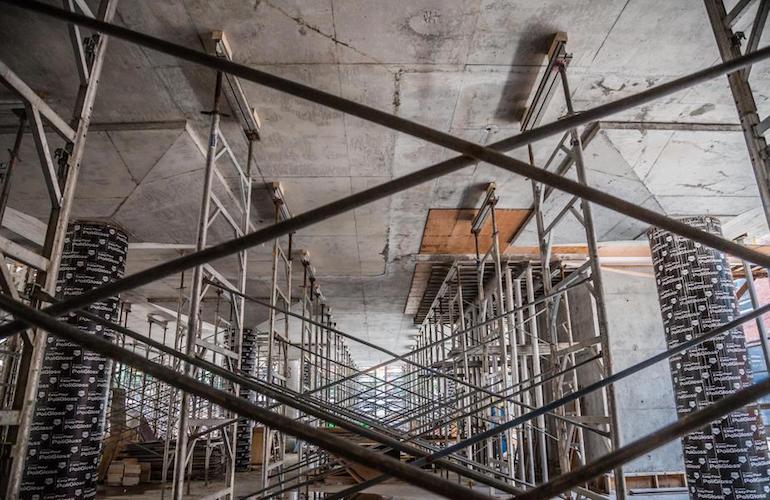In an account I work in, we decided to test restructuring their campaigns on three different locations. All of their campaigns are location based so performance vastly different from one to another. We tested two location campaigns that were consistently struggling to meet lead goal against one location campaign that was easily meeting lead goal on a regular basis. What we did was in best practice: taking all the keywords that were in the previous structure and simply rearranging them into tighter themed ad groups. We had an ad group for each theme and for each ad group. This was to help us streamline the campaigns across the whole account (they were not at all identical) and help us write better targeted ad copy. For us we saw some fluctuating results from the restructure. Below are a few things to look out for when restructuring a campaign to ensure that it is running properly and funds are being allocated efficiently.
Bids
In launching the structure, be sure to look at what the previous bids on keywords were in the old structure. Example: if [red shoes] was $10 in the old structure, be sure to carry over the old bids. Do not launch the new campaign with a flat bid for all keywords. Look at average CPCs for each keyword in the old campaign for the last 90 days-or even a year depending on the type of campaign and client you are working on-to be sure that everything is mirrored in the new campaign.
Keywords
If a keyword was paused in the old campaign at the time of the restructure, launch the new structure with the same keyword status. This can ensure that your CPCs and your CPLs will not suddenly rise with the new structure. If this keyword needs to be re-evaluated after launching the new structure, then be sure to do it, but be careful that in a new structured campaign there is no historical data to help mitigate costs or performance fluctuations on upper funnel keywords.
CPCs
CPCs can be difficult to gauge from old to new structure. One would think that they should stay the same, especially if you are launching the new structure with the exact same bid. However, because there is no historical data of keywords within the new campaign, it’s a completely new keyword to the account. The goal of the new structure should be to see CPCs decrease because that would indicate that the way the campaign is organized is capturing more relevant traffic starting with the keyword, then keyword bid, and then the ad.
CTR
When comparing performance between the old and new structure, I believe CTR is a good indicator of how well the new structure is working or if the old structure was better. This is because CTR shows that the right keywords are getting bid on that get the searcher to click on the ad. This is the ultimate job of PPC. Yes, we want the searcher to convert but an account manager is not a web developer (some may be) and the manager’s focus is to get users to the website. So, if CTR is improving from old to new structure, this is a good indication that the new structure is performing well.
Be careful to not only look at CTR and CPCs. If CTR is improving and CPCs are lowering, but CVRs are decreasing and CPLs are rising it could be an indication that you are putting yourself in irrelevant auctions or too many auctions that are not valuable to you.
CVR
Conversions are what is important to the client. And it should be important to the account manager as well. However, if the account manager is improving traffic and CTR with the new structure but the traffic is not completing the wanted action, then there is a conversion rate problem. In theory, if CTR is increasing then CVR should increase along with it.
CPLs
The first weeks of the restructure launch, we saw an increase in traffic immediately. Impression volume was up and CTR was up. As we did more digging we realized that high funnel keywords were enabled (that were previously not running in the old structure), which were attributing to the high impression volume as well as our rise in CPLs. This is why the previous paragraph about being sure that keyword status remains consistent at time of launch is important. CPL and CPC increases may take a few weeks to show. If CVR is decreasing between the old and new structure, CPLs will rise as well.
Impression Share
Like CPCs, this can be difficult to measure between old and new campaigns. Because if impression share is higher in the new campaign, but CPCs and CPLs are up, then that could be an indicator of unwanted impression share (too expensive/not worth it impression share). If impression share is less than the old campaign but CPCs and CPLs are lower and CVR is the same or higher, this is the optimal amount of impression share to be fully efficient.
Conclusion
Restructure can be a tedious process and can produce very mixed results. Restructuring should not be taken lightly and should be a drawn out process that is evaluated by multiple members of an account team. There are many different levers being pulled that need to consistently be checked. In general, restructuring campaigns to a more organized themed layout should produce optimal results as long as the restructure campaigns received daily analysis and daily optimizations to keep it in top shape.




